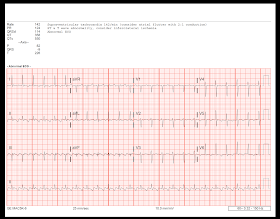
The National Health Insurance Service (NHIS) managed by the government is the single medical insurer in the Republic of Korea. The aim of the current study was to identify the precise impact of body weight and diabetes on the development of AF through various subgroup analyses. The association between being underweight and new-onset AF complicates the elucidation of the true relationship between diabetes, body weight, and new-onset AF. Interestingly, being underweight is also associated with new-onset AF independent of confounding factors such as chronic lung disease and malignancy. It is unclear whether there is any interaction between diabetes and obesity in regard to development of new-onset AF. Obesity is associated with an increased risk of diabetes and diabetic patients are likely to become obese due to insulin resistance. The underlying mechanism of such an association between new-onset AF and diabetes/obesity is not clear but it is proposed that increased left atrial size and pressure might contribute to the development of AF in these patients. Previous studies demonstrated that one kg/m 2 increase in body mass index (BMI) is correlated with a 3–5% increase in the risk of new-onset AF. Diabetes, a powerful risk factor for ischemic heart disease, is also known to increase the risk of new-onset AF.

Currently identified risk factors for AF include advanced age, hypertension, heart failure, ischemic heart disease, and various inflammatory diseases. In order to prevent AF, the exact etiology of AF should be understood. However, probably due to the high efficacy of RFCA, the upstream therapy which is the primary prevention for AF, did not receive sufficient interest. Its efficacy in preventing AF recurrence is shown by improved quality of life, reduced stroke risk, preserved heart function, and even reduced all-cause mortality in a subgroup of patients. Radiofrequency catheter ablation (RFCA) is highly effective in managing AF. Furthermore, the risk of stroke, heart failure, and death is significantly increased when AF is present. Quality of life is significantly decreased in patients with AF. This study suggests that maintaining optimal body weight and glucose homeostasis might prevent new-onset AF.Ītrial fibrillation (AF) is the most common tachyarrhythmia and its incidence is estimated to increase substantially due to the aging of general population. The risk of new-onset AF increased gradually with advancing diabetic stage. Body weight status and diabetes had synergistic effects on the risk of new-onset AF. Patients with obesity, overweight, underweight, and diabetes had significantly increased risk of new-onset AF. Body weight status and diabetes were independently associated with new-onset AF and at the same time, had synergistic effects on the risk of new-onset AF with obese diabetic patients having the highest risk (HR = 1.823). Gradual escalation in the risk of new-onset AF was observed along with advancing diabetic stage.

Obese, overweight (HR = 1.123), upper normal (HR = 1.040), and underweight (HR = 1.055) patients showed significantly increased risk of new-onset AF compared to the normal reference group. Resultsĭuring 80,130,161 patient*years follow-up, a total of 196,136 new-onset AF occurred. New-onset AF was defined as one inpatient or two outpatient records of International Classification of Disease, Tenth Revision (ICD-10) codes in patients without prior AF diagnosis. Primary outcome end point was new-onset AF. Diabetes were categorized as non-diabetic, impaired fasting glucose (IFG), new-onset diabetes, diabetes < 5 years, and diabetes ≥ 5 years. A total of 9,797,418 patients who underwent national health check-ups were analyzed. This was a nationwide population based study using National Health Insurance Service (NHIS) data. We aimed to evaluate the role of body weight status and various stage of diabetes on new-onset AF. However, it is unclear whether there is any interaction between body weight and diabetes in regard to development of new-onset AF. Being obese or underweight, and having diabetes are important risk factors for new-onset atrial fibrillation (AF).


 0 kommentar(er)
0 kommentar(er)
